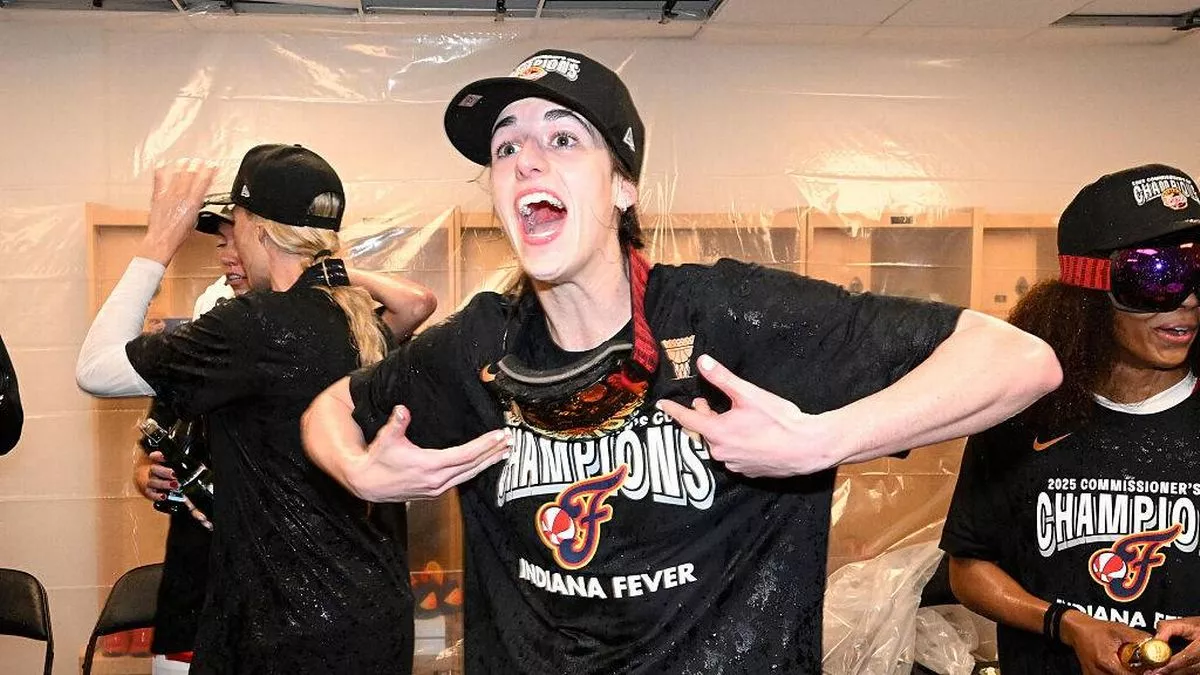Caitlin Clark’s journey through her rookie WNBA season has been nothing short of electric, drawing immense attention both on and off the court. Her recent groin injury, sustained on June 24, kept her out of the Indiana Fever’s triumphant Commissioner’s Cup final win over the Minnesota Lynx on July 1, yet it also brought into sharper focus the financial stakes at play in women’s basketball. While sitting on the sidelines, Clark and her teammates still stand to earn a $30,000 bonus each for winning the Cup—bringing the spotlight not only on her athletic prowess but also on the compensation structure and earning potential within the WNBA (si.com).
On the court, the Fever’s 74–59 victory was driven by stellar defense and clutch performance, but Clark’s absence was deeply felt. Natasha Howard came up big with MVP-worthy production, while the rest of the squad rallied to secure the championship round reward—half a million dollars to be shared among them, with $500,000 split equally and $120,000 in cryptocurrency from Coinbase on top (swishappeal.com). For players on the winning squad, the windfall translates to $30,000 apiece, while even the losing team walks away with a modest $10,000, plus $5,000 in crypto (si.com). The disparity underscores how pivotal each game, and each healthy roster slot, becomes in terms of financial outcomes.
Caitlin’s own financial picture, despite blockbuster endorsement deals, still reflects the stark reality of professional women’s basketball salaries. Under her rookie contract, Clark earns just over $338,000 over four years—an average of roughly $78,066 annually (inkonindy.com). That number, compared to top-tier male professional athletes, is far from appetizing: NBA rookies often sign multi-million-dollar contracts, with stars consistently earning tens of millions yearly. Connecticut exodus Victor Wembanyama, for instance, commands over $50 million in his first four years—illustrating the yawning gap between league financial realities .
Yet Clark’s off-court earnings tell a different story. She reportedly secured a record-breaking eight-year endorsement deal with Nike worth $28 million, marking the largest signature shoe contract in women’s basketball history (en.wikipedia.org). Additional agreements with Gatorade, State Farm, Hy-Vee, Wilson, Bose, and other major brands—and limited-edition product lines like “Caitlin’s Crunch Time”—drastically boost her income beyond the league minimum (en.wikipedia.org).
Even so, her agent Erin Kane acknowledges the discrepancy between Clark’s market impact and her official WNBA salary. Kane has noted how Clark generated $36 million in economic activity in Indianapolis alone and made up nearly 27% of overall league revenue—yet her $78,066 paycheck hardly reflects that influence (the-sun.com). The WNBA’s current collective bargaining agreement limits pay increases, restricting how much players can individually benefit even as the league expands and garners significant investment (including the recent $900 million injection and three new franchises) (talksport.com).
One silver lining is bonus opportunities tied to performance. The Commissioner’s Cup win is a prime example. Even as Clark missed the final, she’s still in line for the full $30,000—a financial cushion in injury setbacks (si.com). But missing games can also mean missing out. As Sports Illustrated highlighted, her injury could cost teammates—and herself—a significant payday. A loss would have meant only $10,000 in take-home, versus the $30,000 each the winners pocket (si.com). That $20,000 swing is nearly a third of her annual core salary, illustrating how competitive incentives compound the impact of absences.
Even more concerning is that this isn’t her first injury this season—she’s already missed multiple games, raising concerns about long-term health and earning capacity. With eight missed games already logged, every absence dents her development and her ability to contribute to future bonuses and opportunities (inkonindy.com).
Beyond the numbers, Clark’s presence has ignited unprecedented interest in the Fever and the WNBA at large. Merchandise sales shot up, arenas sold out, TV viewership soared, and the franchise’s estimated value ballooned to $370 million—making it the second most valuable in the league. All of this is credited in large part to the so-called “Caitlin Clark effect” (en.wikipedia.org). The Fever led the WNBA in revenue in 2024 too, bringing in roughly $32 million, a figure unimaginable just a few seasons ago (en.wikipedia.org).
This growth set the table for a landmark CBA negotiation by 2027. Advocates argue that prize pools, salary caps, and non-guaranteed deals are outdated. The contrast is stark when comparing WNBA players receiving a mere 9–10% of league revenue, while NBA athletes command approximately half . As the league expands its footprint—adding franchises in Detroit, Philadelphia, Cleveland—Clark’s value could serve as a bargaining chip for increased revenue sharing and bigger rookie contracts (talksport.com).
Clark’s agent affirmed this sentiment when she noted that it’s “not possible” under the current WNBA structure to pay Caitlin what she’s truly worth. The agent believes future contracts will need to offer far more flexibility—whether through performance bonuses, incentives tied directly to revenue or viewership, or alternative pathways such as equity stakes (people.com).
Indeed, outside offers already exist. Clark reportedly declined a six-figure plus equity deal from the new Unrivaled Basketball League—valued in the low seven figures—timed as a rival to the WNBA. The lure of such contracts signals both how undervalued WNBA paths still are and how much leverage high-profile players like Clark have in shaping future options (talksport.com).
When juxtaposed with NBA earnings, the contrast is glaring. NBA players benefit from robust TV contracts, global advertising, ticket sales, and merchandising, resulting in a dramatically larger salary infrastructure. WNBA, despite rapid growth, still operates from a smaller base. TV revenue for the league is about $60 million annually—compared to the NBA’s $2.7 billion .
Clark’s profile—TIME Athlete of the Year, AP Female Athlete of the Year, Forbes’ Most Powerful Women, Sporting News Athlete of the Year—highlights her transcendent status (en.wikipedia.org). This public acclaim has real bottom-line implications. In 2025, she became the highest-voted All-Star starter in WNBA history, with over 1.29 million votes—breaking her own previous record (talksport.com). That kind of engagement translates into advertising value and sponsorship interest, which more than justify her push for a better compensation model.
So, what does her $30,000 boost signify? It’s emblematic of both promise and constraint. It shows how performance-based incentives can supplement restricted salary scales, providing meaningful bonuses for success. But it also highlights the fragility of that model. Missing key games threatens not only team success but also major pay opportunities. For top-tier players like Clark, this becomes an economic as well as a health concern.
Looking forward, the fever pitch around Clark may transform into structural change. Her rookie contract’s limits may be offset by endorsement earnings now, but the next wave—after 2027’s CBA renegotiations—could feature escalators: higher base pay, more guaranteed money, flexible bonus systems, or even equity stakes for marquee athletes. Clark’s Nike deal and limited-product apparel lines may serve as prototypes for future player-led revenue generation (marketwatch.com). In the meantime, the Commissioner’s Cup payout offers a template. Team-based incentives—$500,000 total—reflect how micro-pools can reward success without disrupting salary caps.
But for the WNBA to truly capitalize on momentum, concerted action is needed. Pushing more revenue toward players—shifting from the current 9–10% to a more equitable share closer to other leagues—could help cement the sport’s rise. With new venues, expanding franchises, rising TV numbers and global attention, the demand is there. The challenge lies in restructuring the pie so players like Clark see more of what they help create.
In the short term, Clark’s $30,000 boost—even as she sits injured—is a small balm. It ensures she’s rewarded for her team’s triumph and rides its momentum. But the greater lesson is that incentives matter—and missing games still comes at a steep cost. As she returns to action, eyes will follow not just her on-court contributions but the broader game she’s playing off the court: using her influence to reshape women’s basketball’s economic narrative.
Caitlin Clark may be sidelined right now, but the headlines she headlines continue to echo far beyond the hardwood. Her situation spotlights both the limitations and opportunities within the WNBA’s structure. As leagues across America push for equity and players demand their share, Clark stands at the nexus. The $30,000 for winning the Cup is nice, but it leaves her—and the league—hungering for more. And if this emergence serves one purpose, it’s crystal clear: women’s basketball has arrived as more than a game—it’s a movement.



